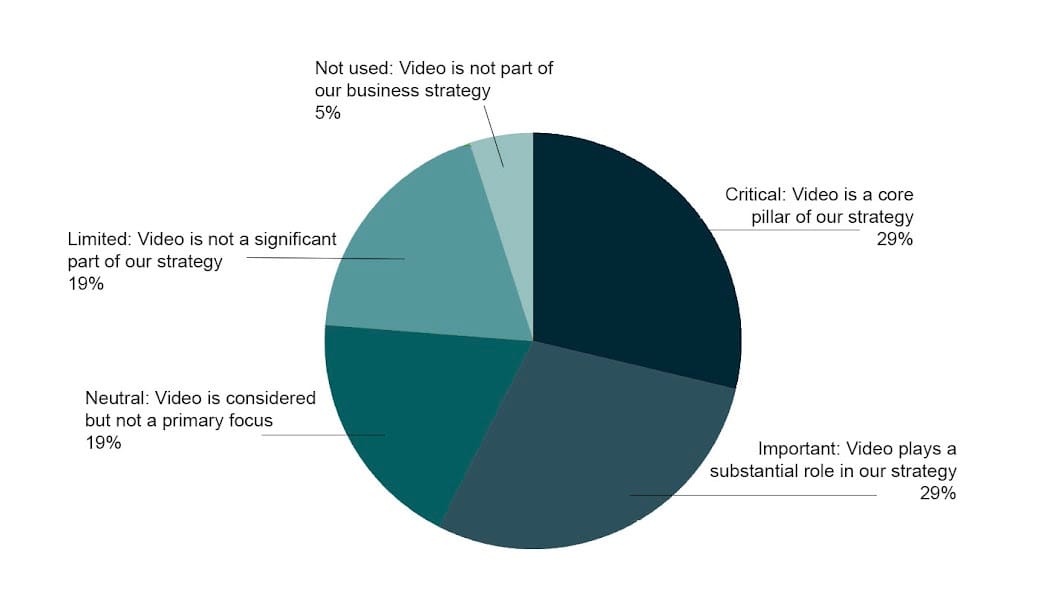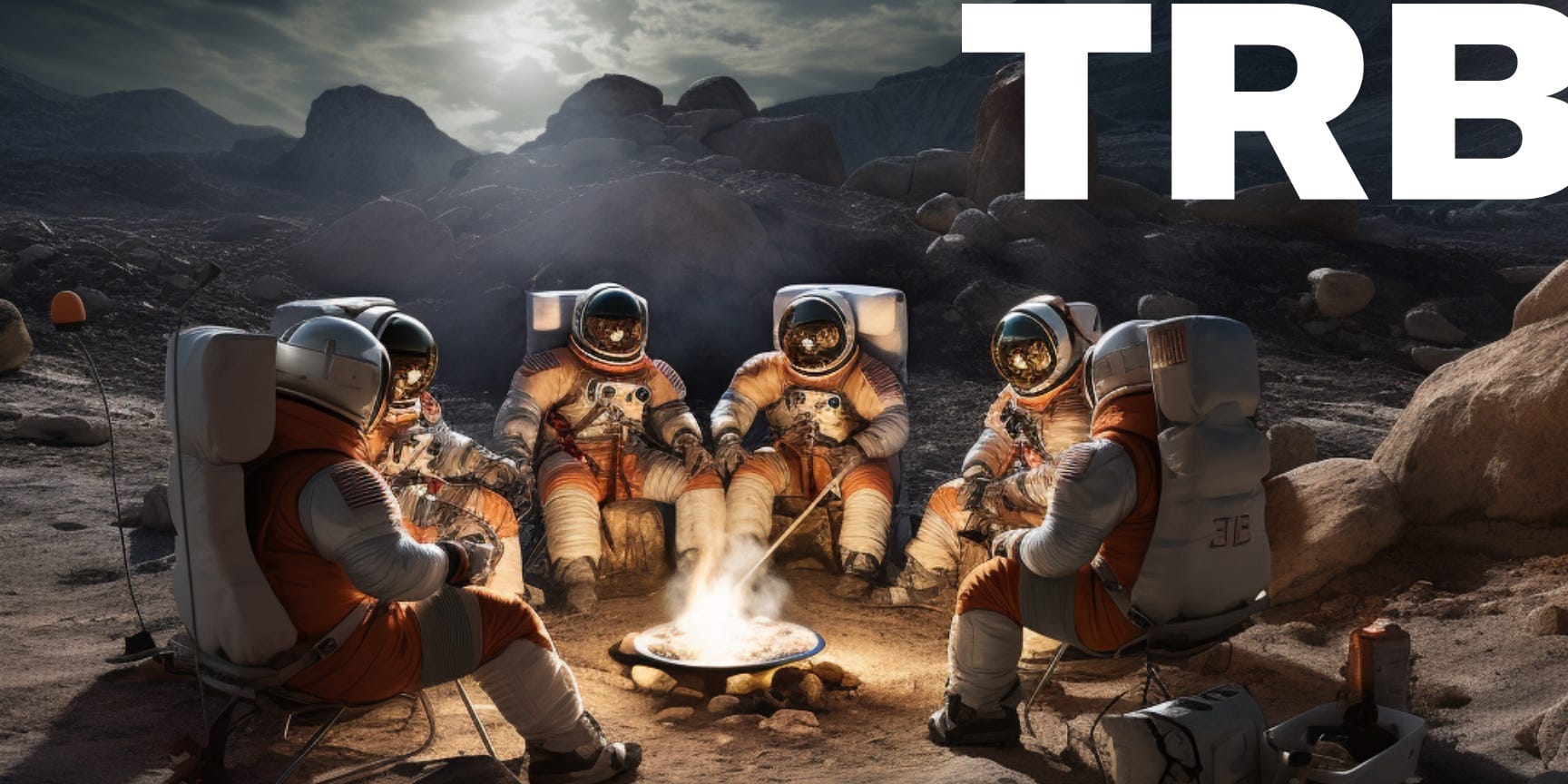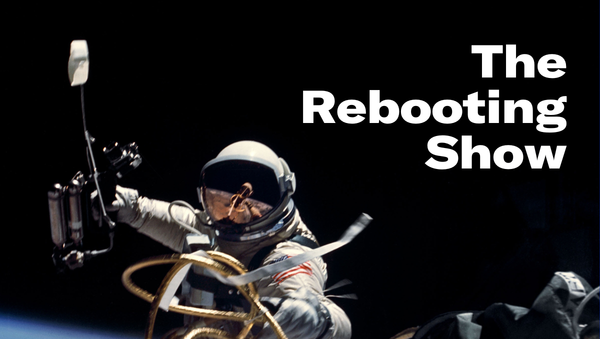Media's uncanny valley
Artifice is losing
We’re kicking off The Rebooting dinner series with a discussion of shift to direct-sold advertising at an executive gathering in New York, sponsored by Permutive. Sign up to apply for invites; this helps us match the best attendees to the topics.
This week, I’m returning to a theme I’ve been trying to get at in a few different ways. It’s about a shift to conversational forms of media that better match a low-trust era. In Recommendations: a new niche play, Google on trial as the long tail dies off, and Mark Thompson’s DTC playbook

Don’t call it a pivot
The Rebooting and Video Elephant surveyed 165 publishers about the state of their video monetization. 73% said increasing video ad revenue is a priority for their business. Over half of those surveyed see video as a core pillar or “substantial part” of their overall strategies.

Recommendations
Rich niches. The media companies raising money are narrower, and often have business models focused on where there’s money. Estate Media raised $1.7m because it ticks many of the most attractive boxes today: 1. Targeting a lucrative category; 2. A creator and personality angle; 3. Emphasis on newsletters, podcasts and video; 4. A prosumer lens. (WSJ)
RIP long tail. Web 2.0 didn’t work out as planned, and much of it was premised on the Long Tail, the collection of content without mass popularity. The internet is still an open system with massive diversity, but power laws have replaced the long tail everywhere you look. (Slate)
The tragedy of Google search: “Unlike its streamlined, efficient former self, Google Search is now bloated and overmonetized. It’s harder now to find answers that feel authoritative or uncompromised; a search for healthy toddler snacks is overloaded with sponsored product placement, prompts to engage with “more questions” and endless keyword-engaged content.” (Charlie Warzel in The Atlantic)
Sports will decide the future of TV. This interesting profile of top Apple exec Eddie Cue contains a scary nugget that shows why the future of TV will be determined by sports: “Per Nielsen, 94 of the 100 most-watched US TV broadcasts in 2022 were sporting events, with NFL accounting for 82 of those, and 19 of the top 20.” (GQ)
Mark Thompson’s DTC challenge. Every coach and executive has a playbook, so it would stand to reason that former NYT CEO Mark Thompson will reorient CNN for a direct-to-consumer future. The open question: Are there enough people who want CNN’s product enough to make that work. After all, as Dylan Byers notes, CNN is drawing just 500,000 viewers in prime time and often a pittance in key demos. “So long as these are the metrics by which CNN measures its success, this will not be a sustainable business.” (Puck - Sponsored)
The uncanny valley of media

Listen to the conversation I had with Troy and Alex that led to this piece on Apple, Spotify or wherever you get your podcasts.
Watching NFL pregame and halftime shows, late-night TV talk shows, cable TV news and many of the five-guys-in-jeans-and-blazers-on-stools panels of “events season” is a jarring experience. In their own ways, all belong in a time capsule. These were all conventions born before social media. Most of the media people consume these days is some flavor user-generated content. It’s more popular than “professional” content for a reason.
There’s what my podcast partner Alex Schliefer called “the uncanny valley of media.” What’s presented as real is actually a simulacra of conversations, a rehearsed performance that’s as “real” as reality TV was. It’s no coincidence that the semi-scripted reality TV conventions of the 2000s have fallen out of favor. Cable news is on its way to mostly be a delivery vehicle for pharma ads. Morning shows will follow suit; Today is drawing less than half the audience it did 15 years ago. Those conversations are not real.
I’ve done podcasts for nearly a decade now. There are tells when a conversation will be bad. One is the PR person wants to listen in during it. The other is when people want questions ahead of time. Sounds like the start of a thrilling conversation.
Too many people want to be interviewed rather than have a conversation. A conversation is dynamic while an interview is structured. An interview is safer, no doubt. A conversation requires people actually think on their feet rather than parrot the talking points they were handed ahead of time by underlings. I’ve had people come into a podcast studio with a printed out list of talking points they were given.
The same goes for the conference panel. We are entering the fiercest fighting of events season. There are some battle-hardened soldiers in blue blazers and jeans who went from Brandweek to DPS to Dmexco to Adexchanger. Industry events are about networking, aka lots of cocktails-fueled “dealmaking atmosphere,”but the content is meant to orient the show. I’ve wanted to kill the conference panel for a decade now. It persists. Inevitably the moderator goes down the line with questions prepared ahead of time.
The truth is public conversations will always take on a different flavor. People are naturally self-conscious. The best panelists are over 40 because that’s the age when most people stop caring much about what others think of them. Getting as close to a normal conversation as possible is the goal. (That’s why for events, I’ve chosen to have private dinners vs lanyards at the Hilton.)
Podcasts beat over-produced radio shows for that reason. Listening to free-flowing conversations, with digressions, is preferable to Michael Barbaro pretending to be surprised on The Daily. The adversarial interview/interrogation is a journalistic staple that has its place but tends to slip into performative peacocking. Early Twitter was actually a place for conversation before it degraded into mostly multilevel marketing and strategic use of rage-baiting to drive engagement.
The best newsletters have a conversational tone. They’re not written in the inverted pyramid style of j-school. Journalism is filled with esoteric conventions created in bygone eras. Readers are not told if the story originated with information supplied from a competitor or a short seller. 95% of interviews are left out. The narrative doesn’t help. It requires sanding off rough edges and leads to people losing trust because the real bias is what you choose to leave out. Jimmy has that part right.
The awkward phone call between Dave Portnoy and the Washington Post reporter working on a story about him highlights how journalism will need to find ways to work in an open kitchen. It was awkward but actually real. Portnoy claims the Post was doing a hit piece. But reading the actual article, I was left to believe it was a legitimate story. There’s a difference between an editor deciding to target Portnoy’s pizza festival and a reporter noticing Kenji Lopez-Alt’s swipe at Portnoy and pursuing a story.
AI will undoubtedly accelerate this as we are surrounded by simulations of what human interaction is like but not quite. I think people latched onto AI’s “hallucinations” because the weird stuff was the most human part of what these chatbots were doing vs regurgitating lists.
We’ll see storytelling conventions shift. I’d take a “Lunch with the FT” with Anna Wintour, despite there being a lack of eating, over another profile with anonymous sources claiming this time, no really, Anna is on her way out. There’s an artificiality to it, but it’s a lot more human. And there will also be a rise of more conversational forms of media that are less focused on accountability journalism and scoops but on working through issues, connecting dots, and having real conversations.
Listen to the conversation I had with Troy and Alex that led to this piece on Apple, Spotify or wherever you get your podcasts.
Thanks for reading. Send me a note by hitting reply or emailing me: bmorrissey@therebooting.com.




